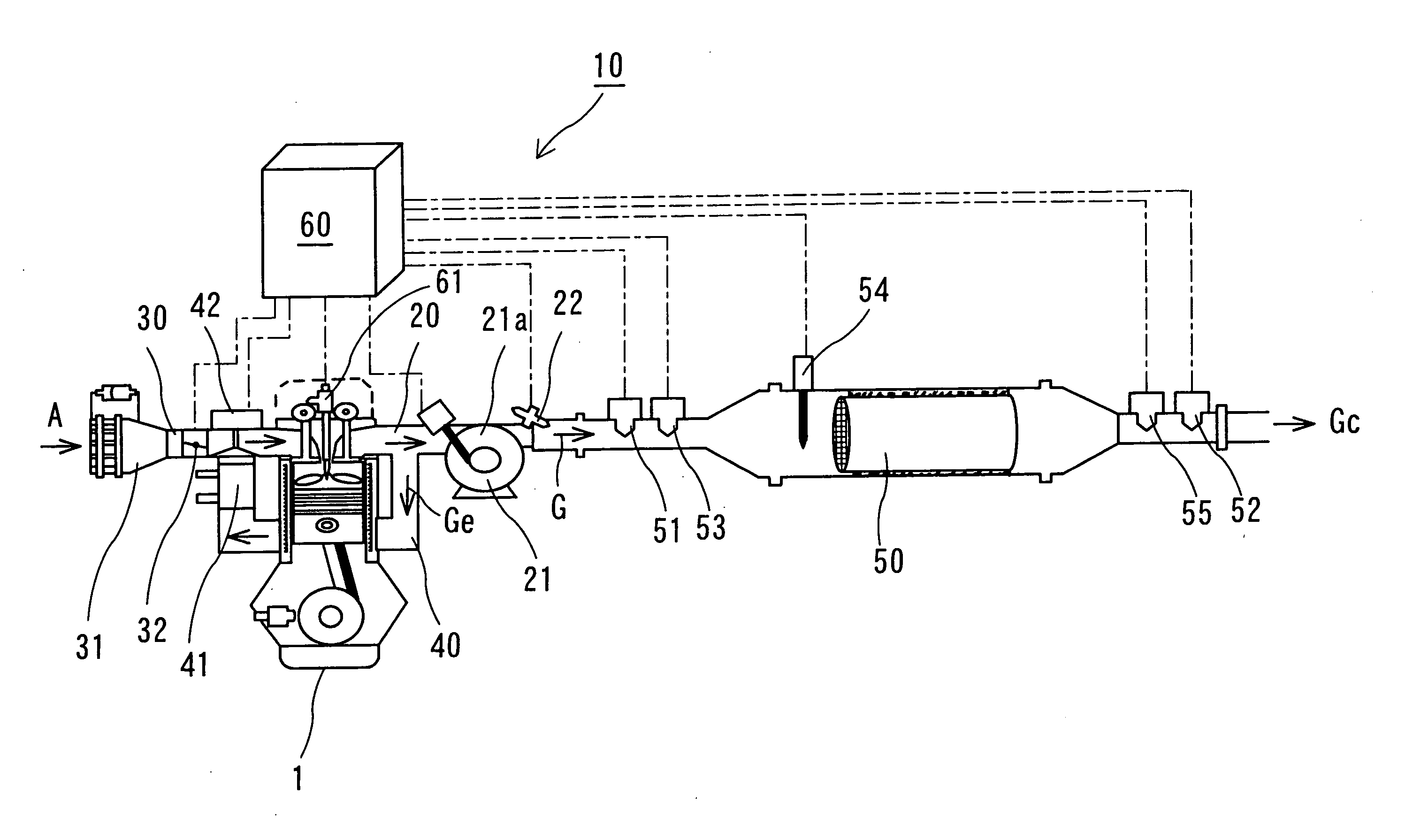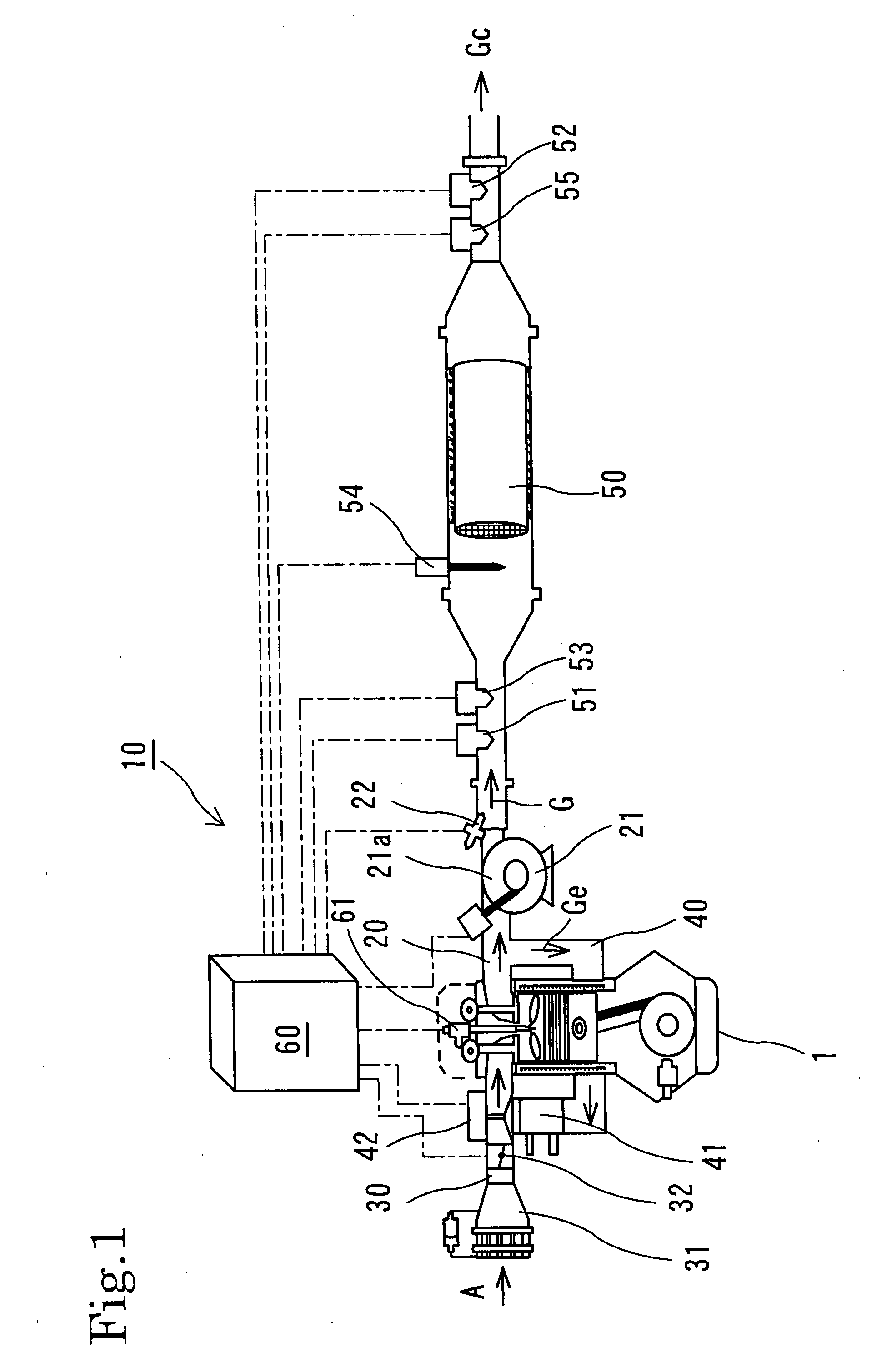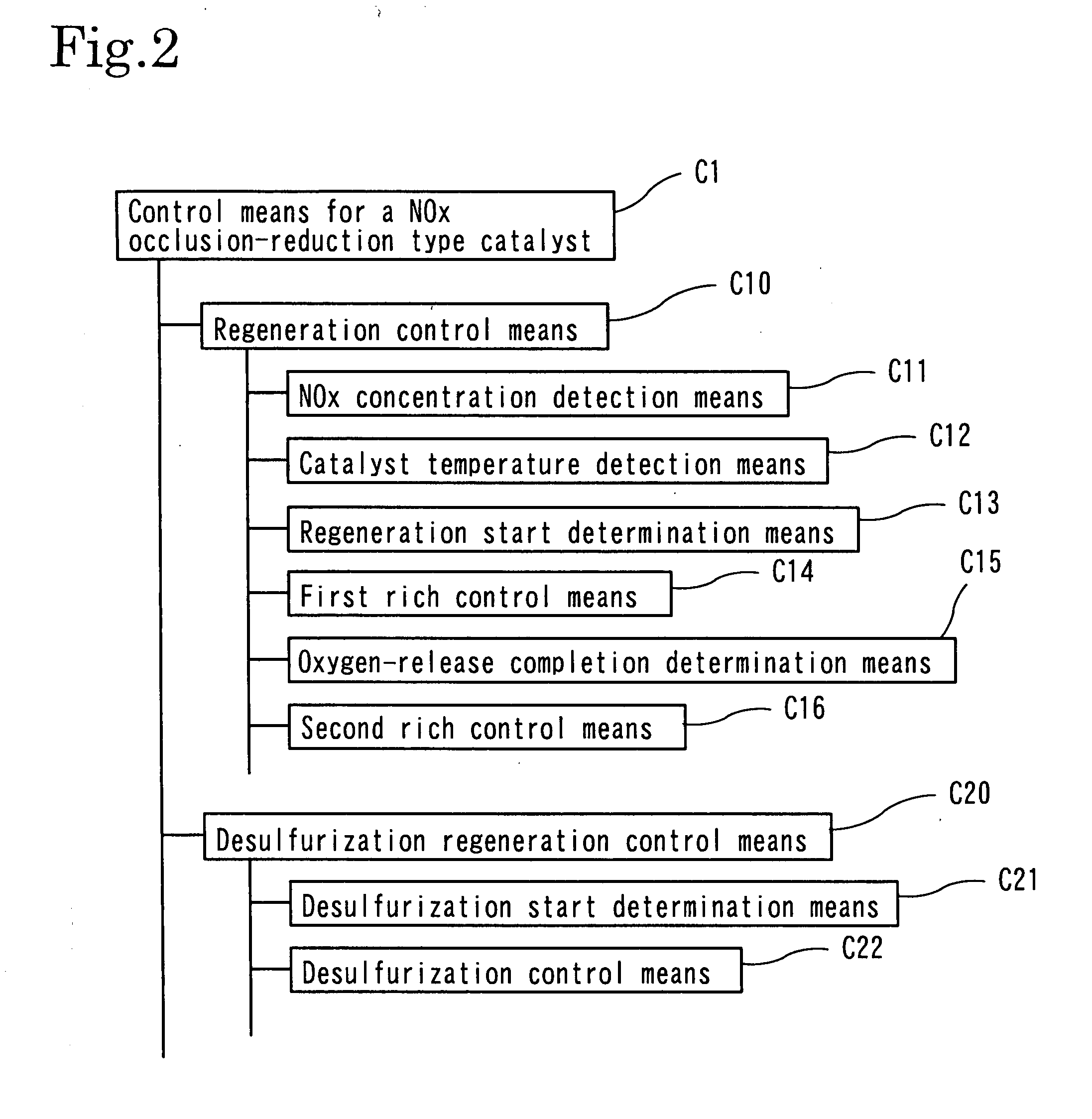Method of Exhaust Gas Purification and Exhaust Gas Purification System
a technology of exhaust gas purification and purification system, which is applied in the direction of exhaust treatment electric control, electrical control, separation process, etc., can solve the problems of loss of nox occlusion function, insufficient activation of nox reduction reaction, and inability to reduce nox and flow out, so as to improve the performance of nox purification and reduce the outflow of unpurified nox in the initial stage of regeneration control , the effect of reducing the nox released from the catalys
- Summary
- Abstract
- Description
- Claims
- Application Information
AI Technical Summary
Benefits of technology
Problems solved by technology
Method used
Image
Examples
Embodiment Construction
[0057] A method of exhaust gas purification and an exhaust gas purification system of the present invention will hereinafter be described with reference to the drawings. The term “rich condition of exhaust gas” herein used does not represent rich combustion in the cylinder, but represents a condition where the ratio between the amount of air and the amount of fuel (including the amount combusted in the cylinder) that are supplied into exhaust gas flowing into a catalyst unit carrying a NOx occlusion-reduction type catalyst, is close to the theoretical air / fuel ratio, or in a rich condition where the amount of fuel is larger than that of the theoretical air / fuel ratio.
[0058] An exhaust gas purification system 10 shown in FIG. 1 is configured to place a catalyst unit 50 carrying a NOx occlusion-reduction type catalyst in an exhaust passage 20 of an engine (internal combustion) 1. The catalyst unit 50 is formed with a monolith catalyst. In the catalyst unit 50, a catalyst coat layer i...
PUM
 Login to View More
Login to View More Abstract
Description
Claims
Application Information
 Login to View More
Login to View More - R&D
- Intellectual Property
- Life Sciences
- Materials
- Tech Scout
- Unparalleled Data Quality
- Higher Quality Content
- 60% Fewer Hallucinations
Browse by: Latest US Patents, China's latest patents, Technical Efficacy Thesaurus, Application Domain, Technology Topic, Popular Technical Reports.
© 2025 PatSnap. All rights reserved.Legal|Privacy policy|Modern Slavery Act Transparency Statement|Sitemap|About US| Contact US: help@patsnap.com



